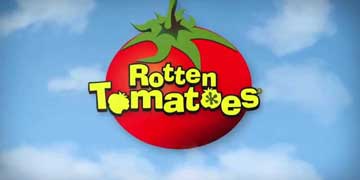
The influence of review aggregator RottenTomatoes (RT) has become more and more prevalent over the last couple of years. But, it isn’t until recently when it reached a tipping point.
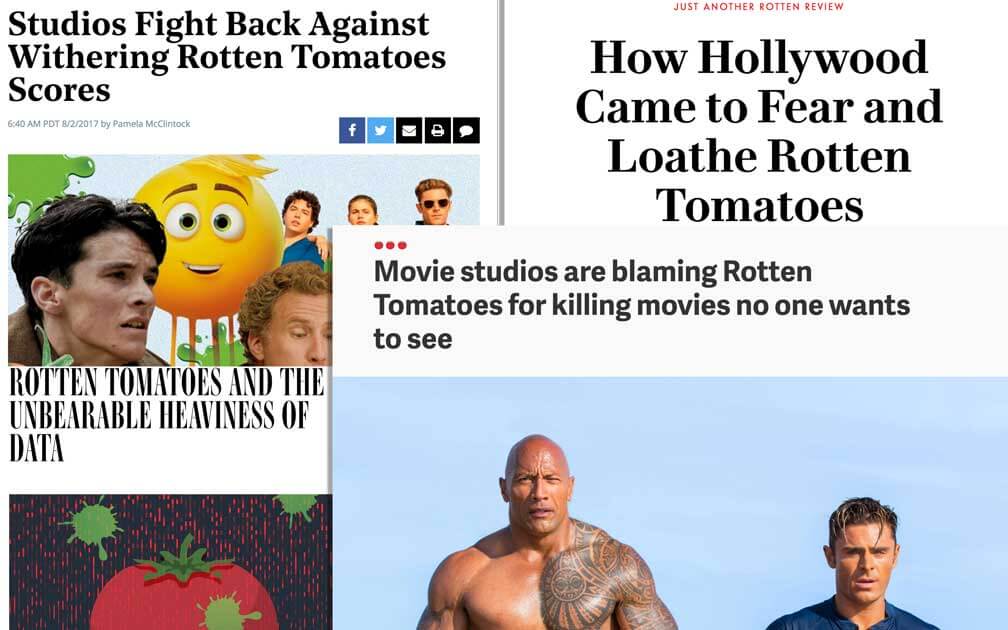
As the site continues to grow in profile, so does its effect on what movies we eventually decide to see (or not see) in theatres. It is far from an infallible metric, but the mighty Tomatometer is perhaps, still one of the most trusted systems among many moviegoers.
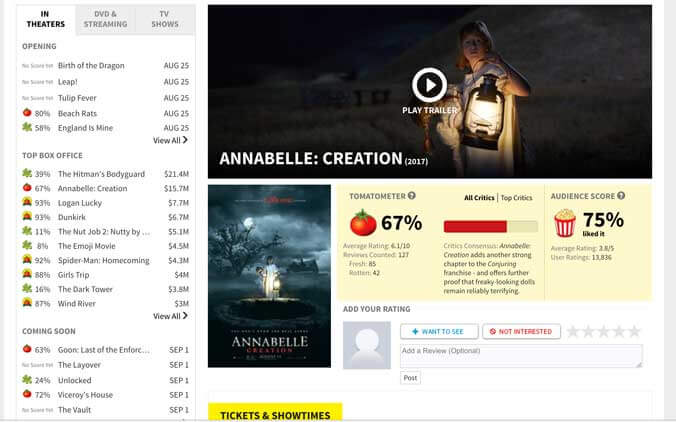
Basically, in order for a movie to receive an overall rating of "Fresh", the reading on the Tomatometer for that movie must be at least 60%. A bad review is denoted by a rotten green tomato splat, aka "Rotten" (59% or less).
The buzzword here is validation - we feel a little more 'comfortable' spending our time and money on a particular movie knowing that others have given it a thumbs up. Researchers, for example, found that 7 out of 10 people would be less likely to see a movie if RT gave it a score of 0-25. A quick poll conducted in the Popcorn office yielded similar results, with 4 out of 5 colleagues singing an identical tune.
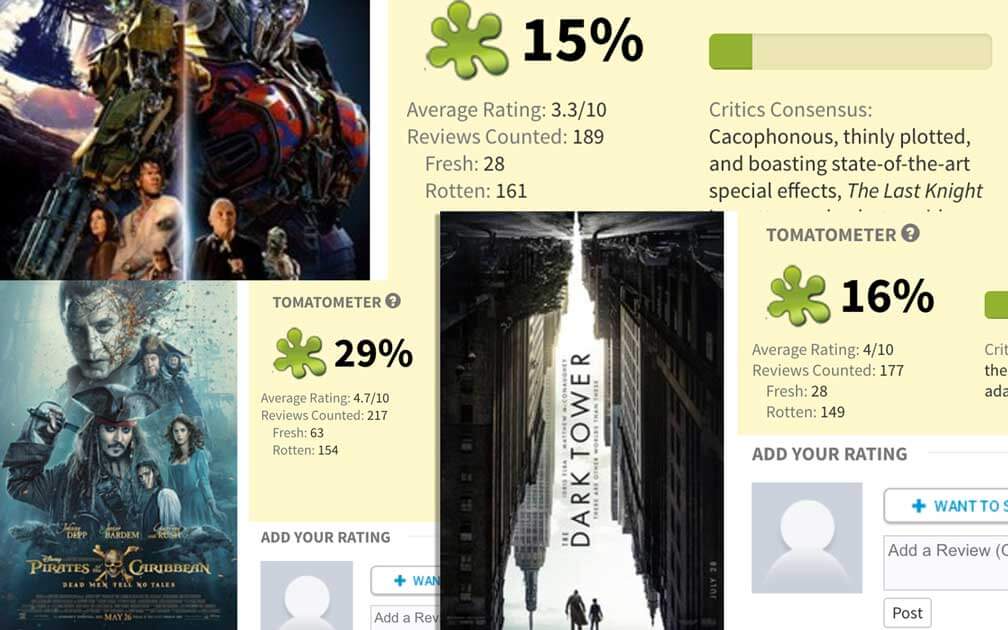
Box office sales, as major film studios put it, are essentially predicated on this binary separation between "Fresh" and "Rotten". This year, a slew of blockbusters earning the dreaded green splat underperformed, including Transformers: The Last Knight, Pirates of the Caribbean: Dead Men Tell No Tales, and The Dark Tower.
Quite simply, moviegoers are using RT more and more to judge if a movie is worth watching.
Yet, the question remains: Is it truly the bane of Hollywood’s current crisis?
That actually depends on you - the average moviegoer.
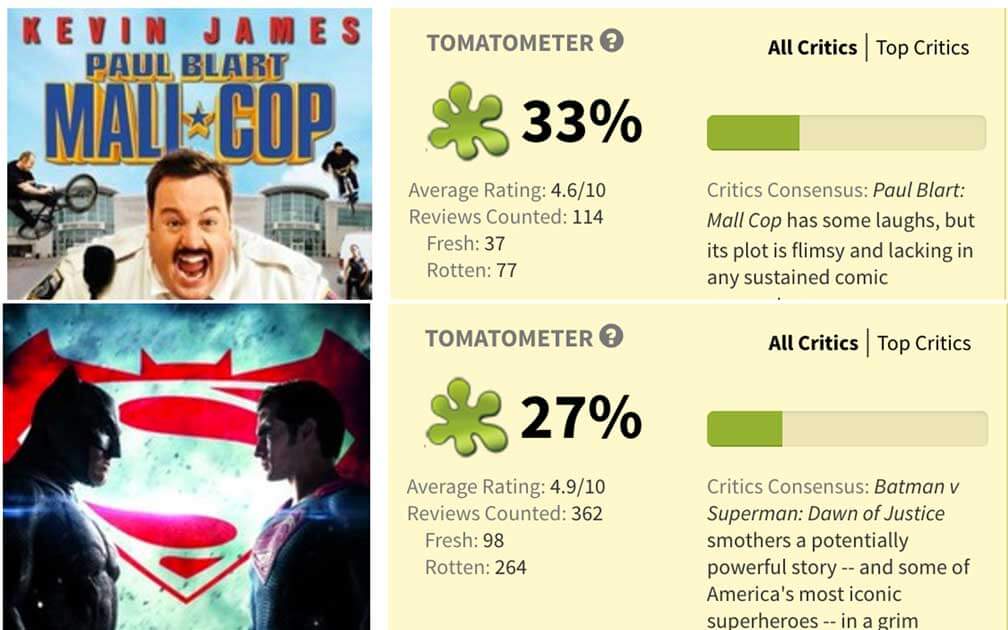
Is Batman v Superman worse than Paul Blart: Mall Cop? A million times no! But, the number that most people pay attention to is the % indicated on the Tomatometer.
While useful as a basic barometer, it distorts the actual quality of a movie both positively and negatively. It’s important to note that the Tomatometer does not indicate the degree to which critics like or dislike a movie, but the amount of good reviews compared to bad reviews.
Here’s an example:
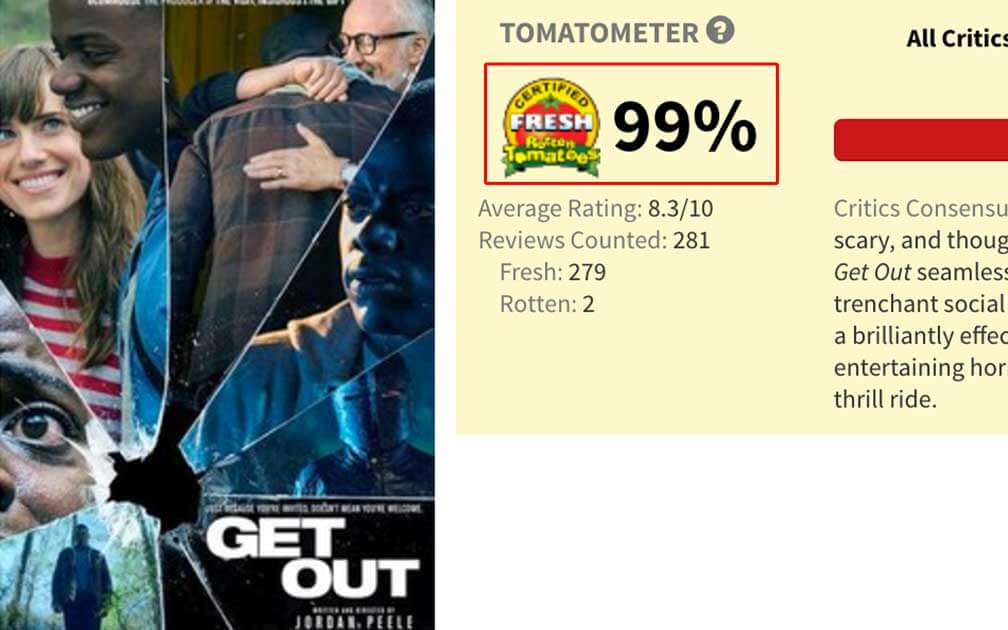
What this means is that 99% of critics rated Get Out favourably, while 1% rated it unfavourably. It does not mean that GET OUT is 99/100!
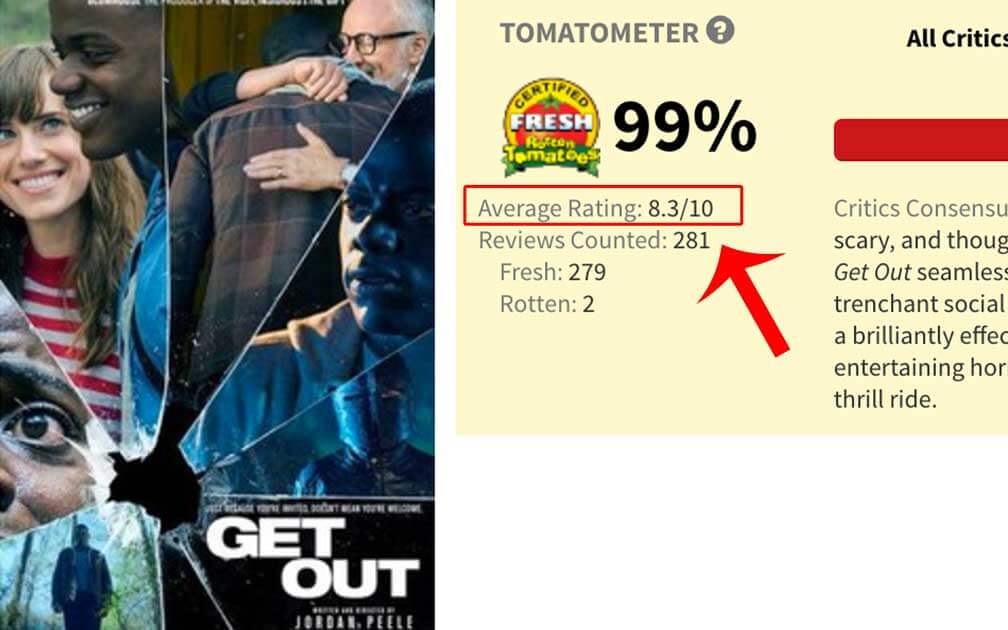
To obtain a more accurate rating, the number that you should be paying attention to is the average rating. The average rating allows critics to rate the film from 1-10, allowing for a far more detailed overview.
Based on the picture below, you can see why the Tomatometer is skewed.
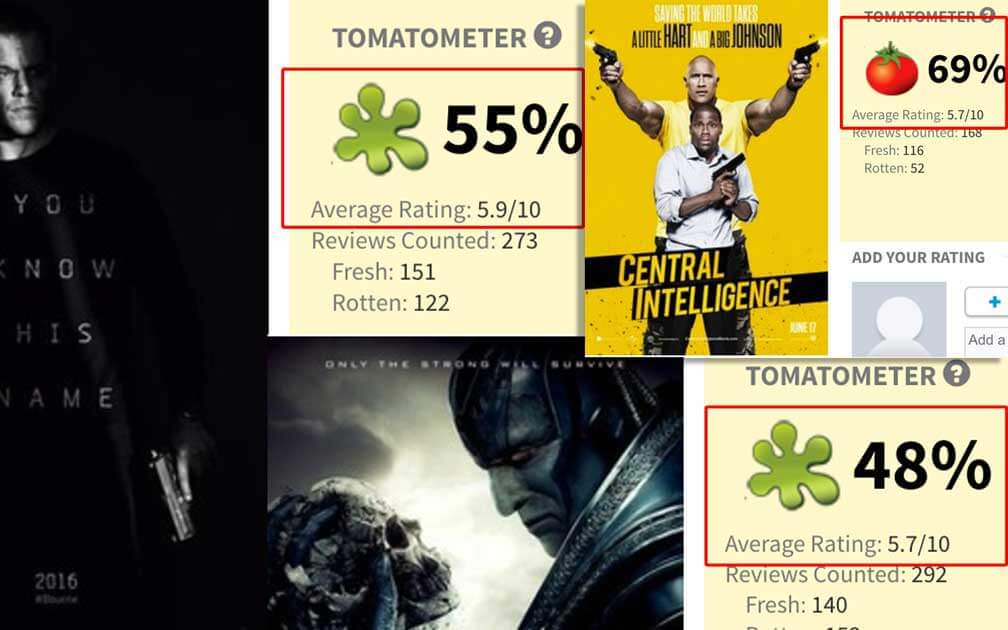
Jason Bourne has a higher average rating than Central Intelligence, but is certified "Rotten". Similarly, X-Men: Apocalypse has the same rating as Central Intelligence, but is certified "Rotten".
As you can see, some movies are made to look worse than they are. Fundamentally, Rotten Tomatoes doesn’t actually misrepresent a rating, it just doesn’t do a very good job at providing a consensus. Unless you’re actively looking for the average rating, you most likely wouldn’t notice it.
A "Rotten" % doesn’t necessarily mean a movie is bad. Some of the most interesting and memorable movies ever made are also the most divisive. If you need a second opinion, look at other sites such as Metacritic, which uses different systems to express critical opinion.
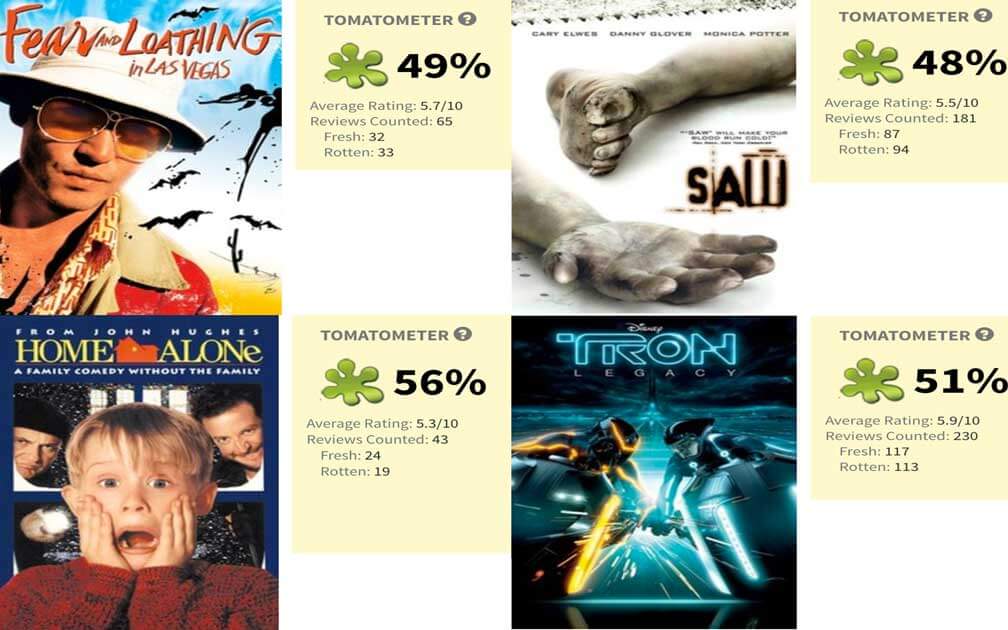
But most importantly, make up your own mind. The best way to decide if a movie is good or bad is to see it for yourself. After all, seeing a movie and forming your own opinion will always carry more weight.
